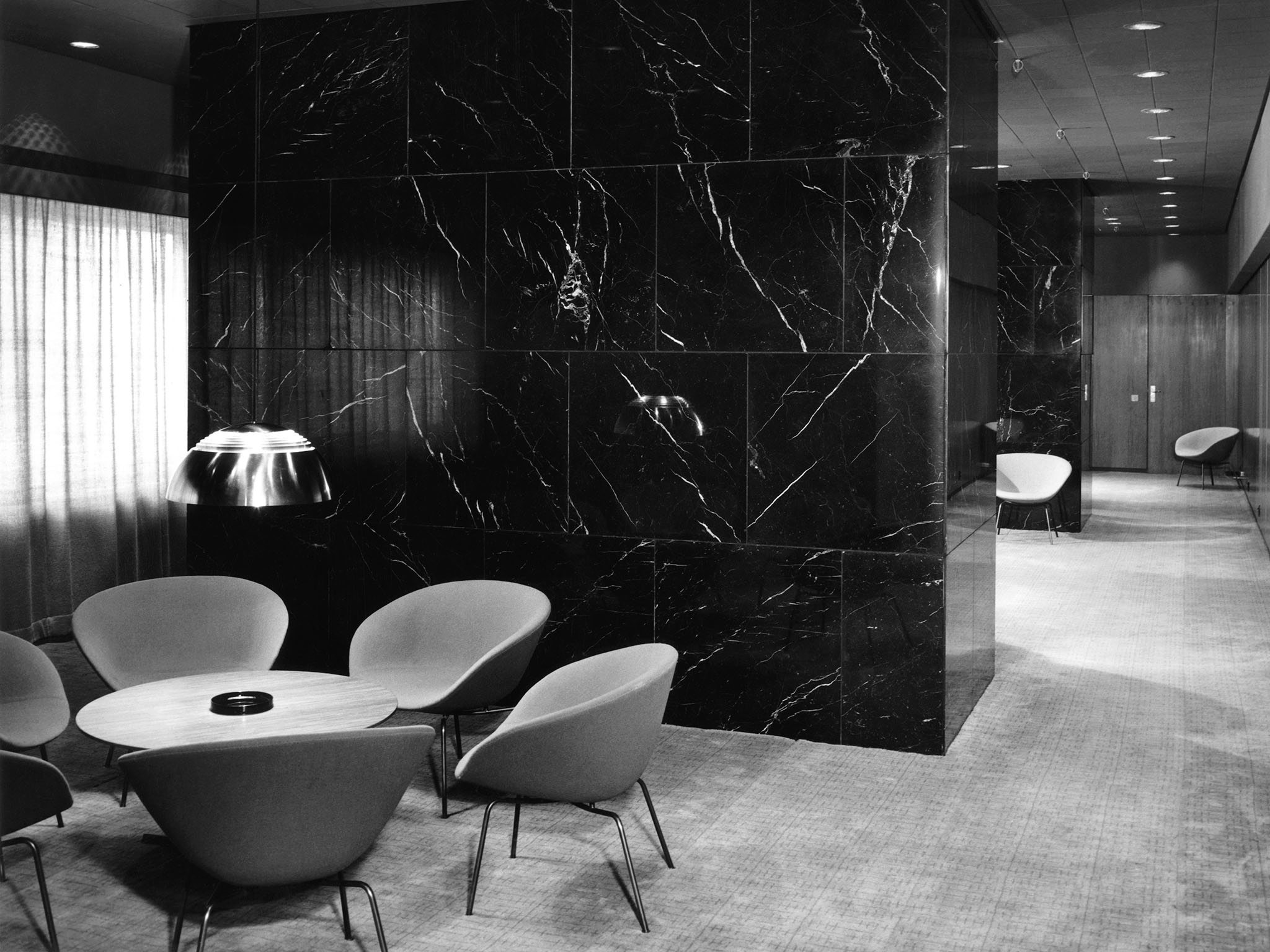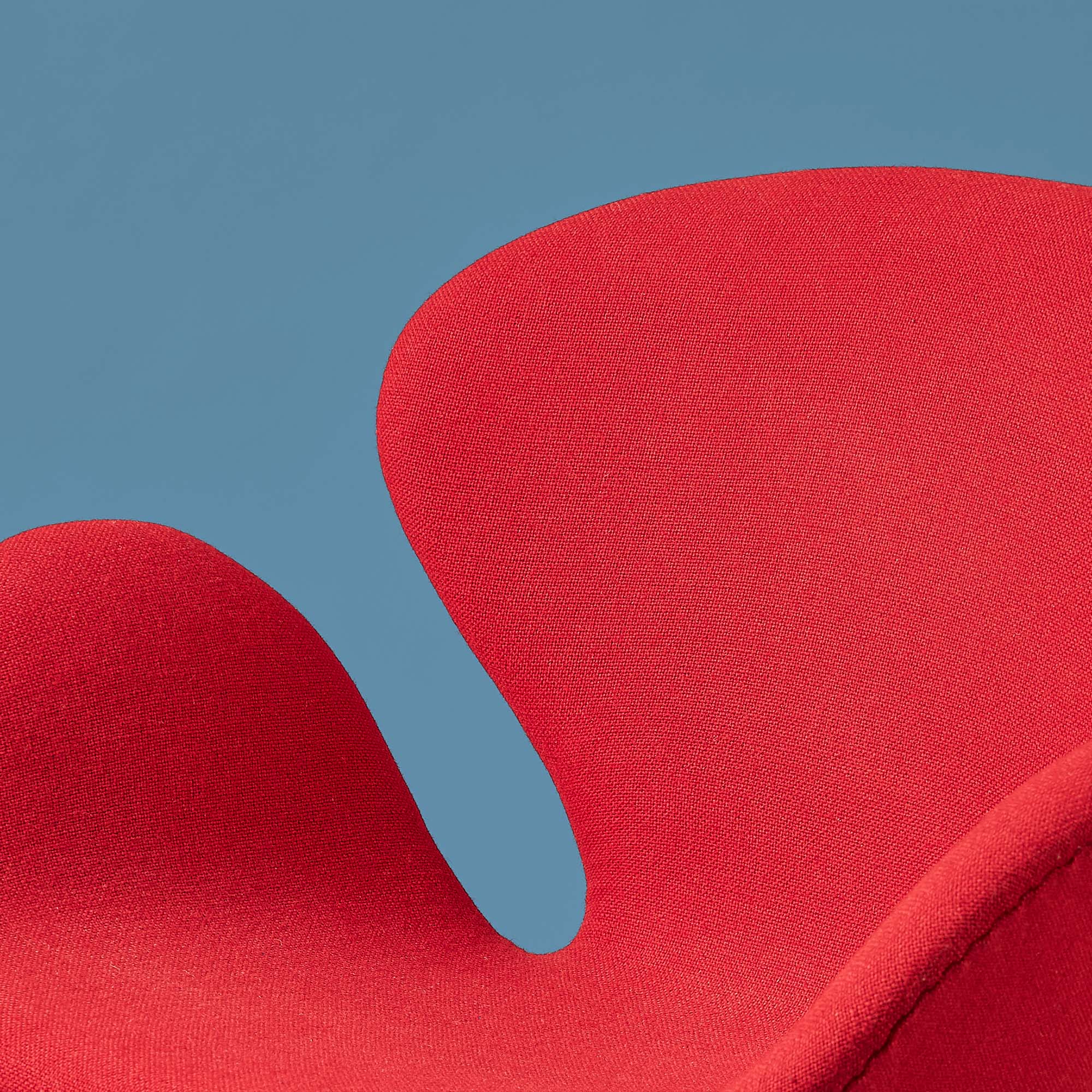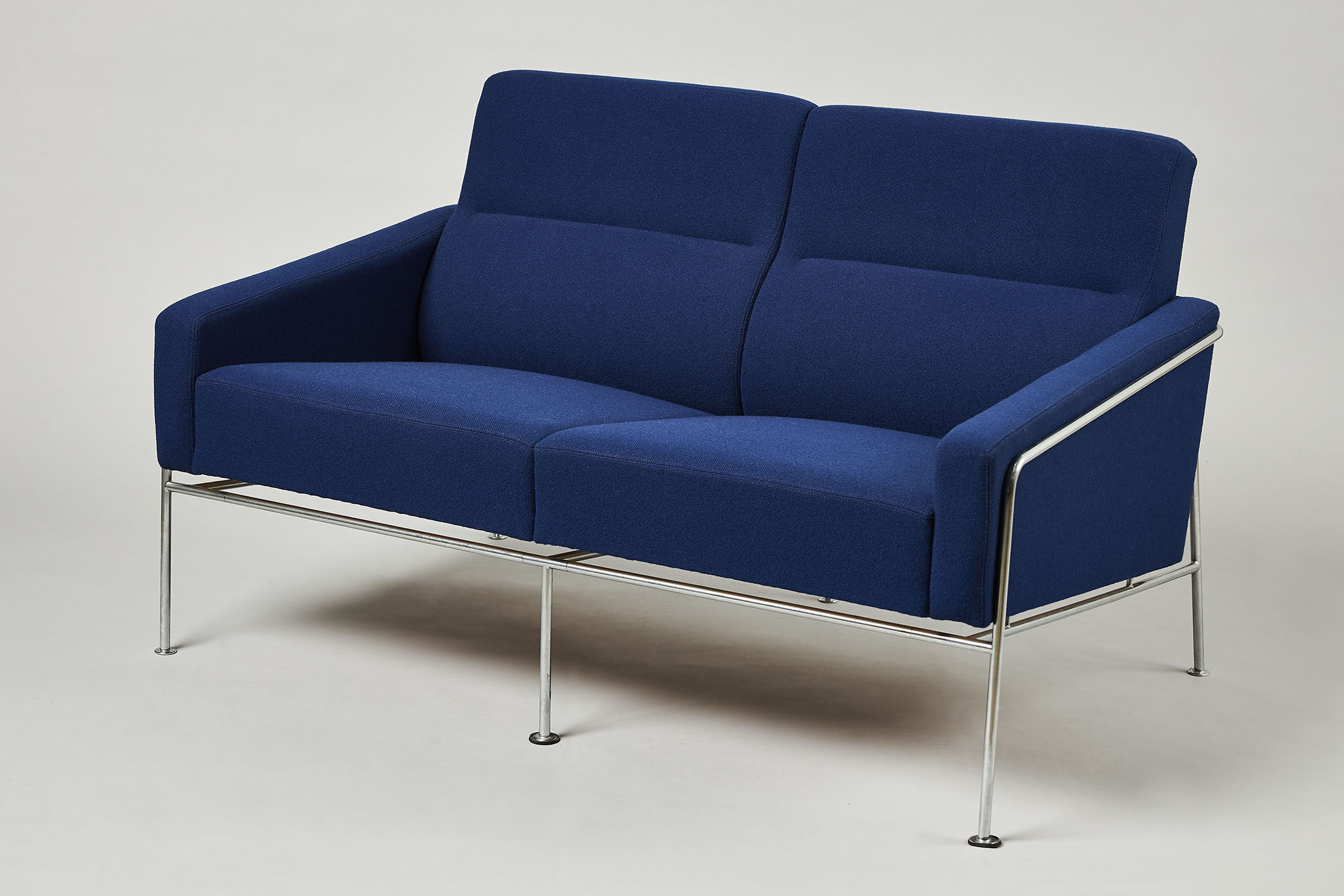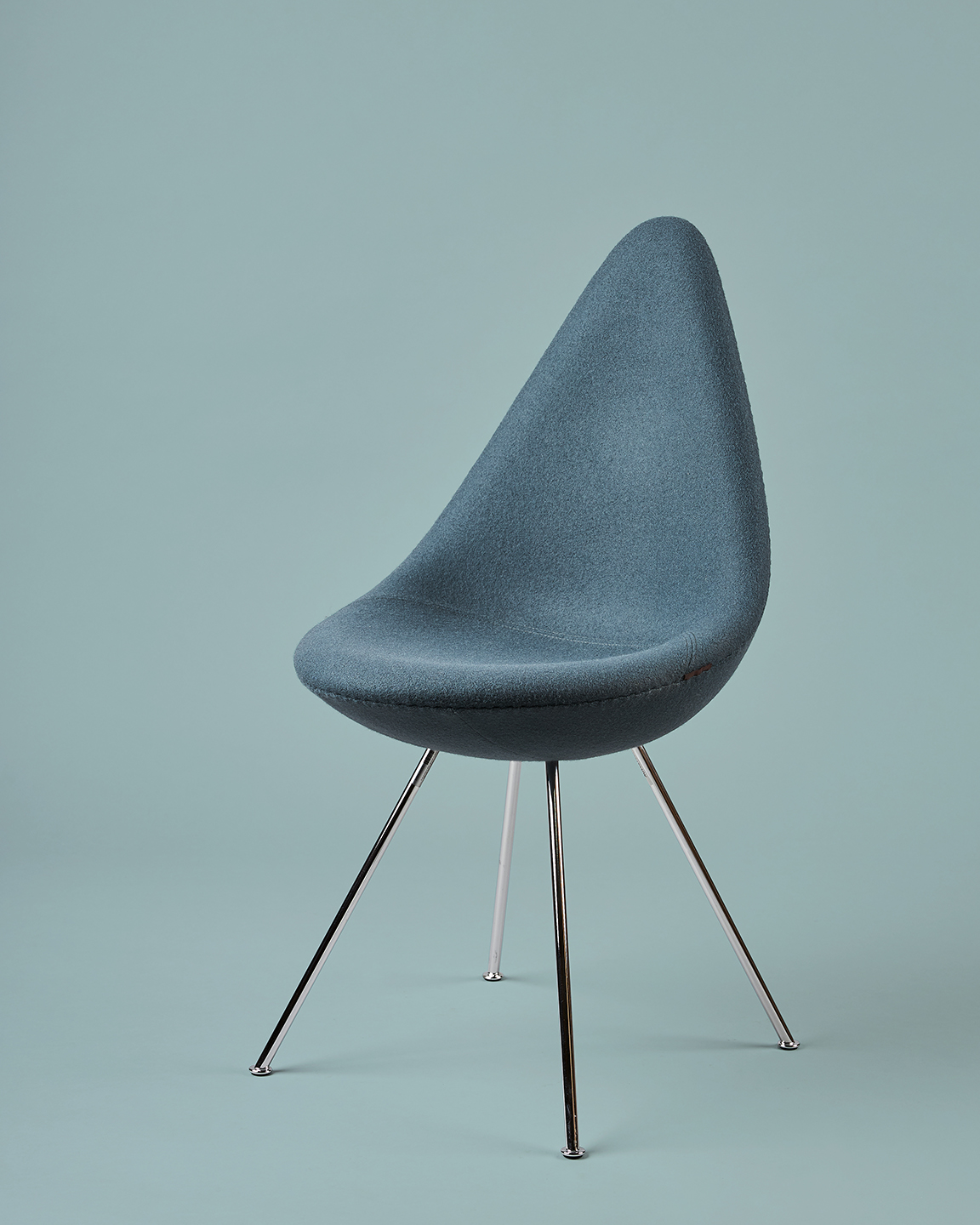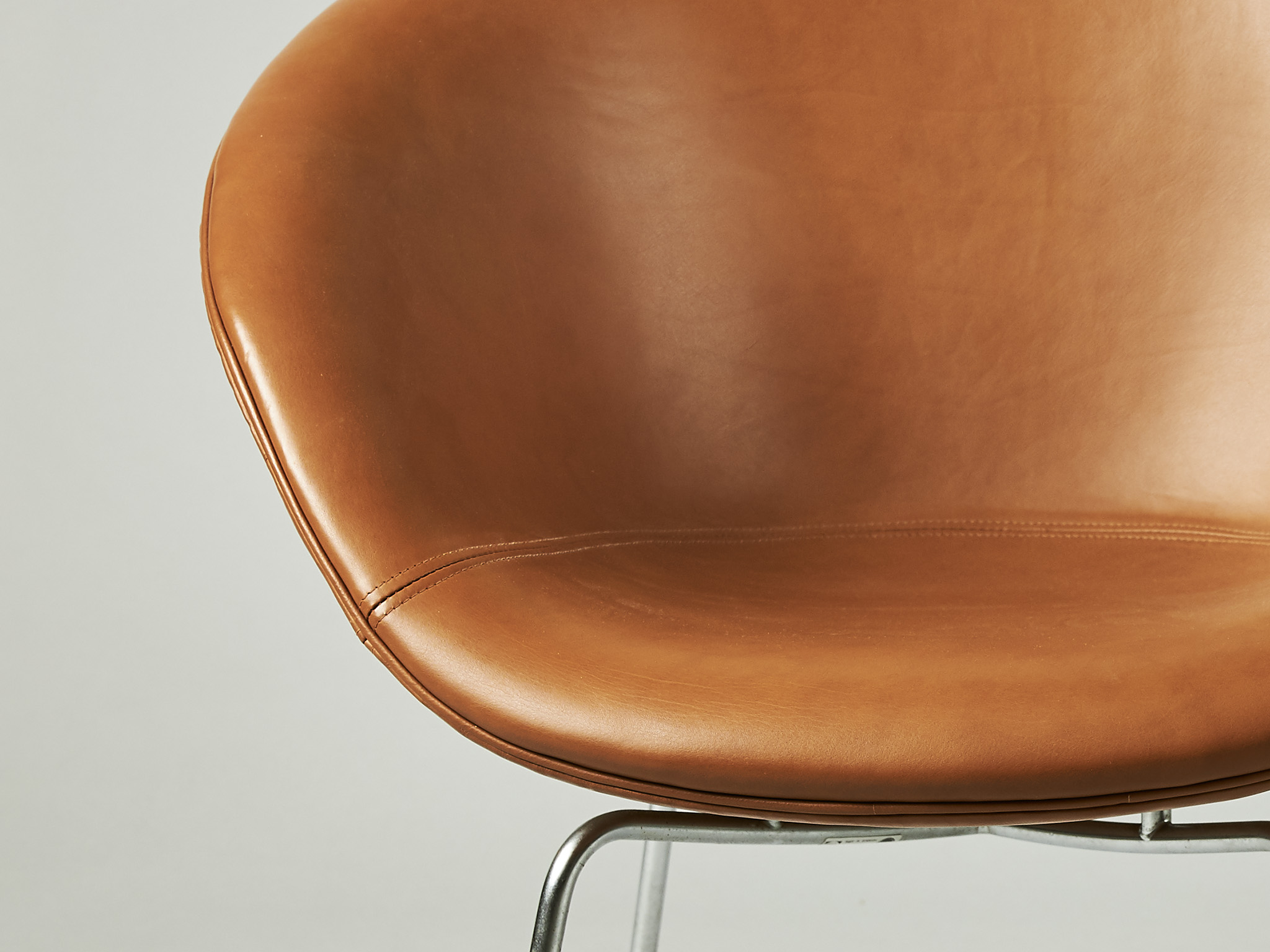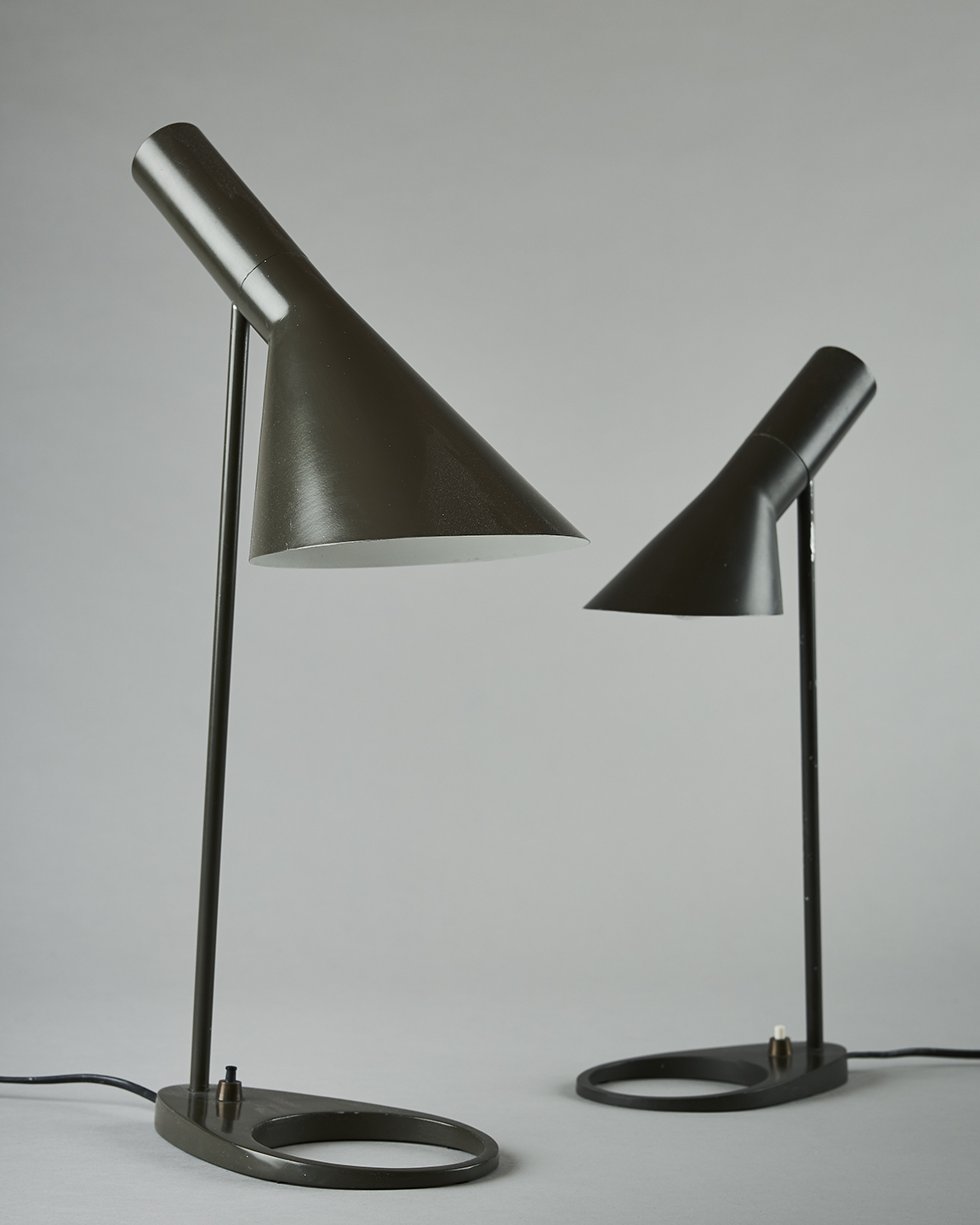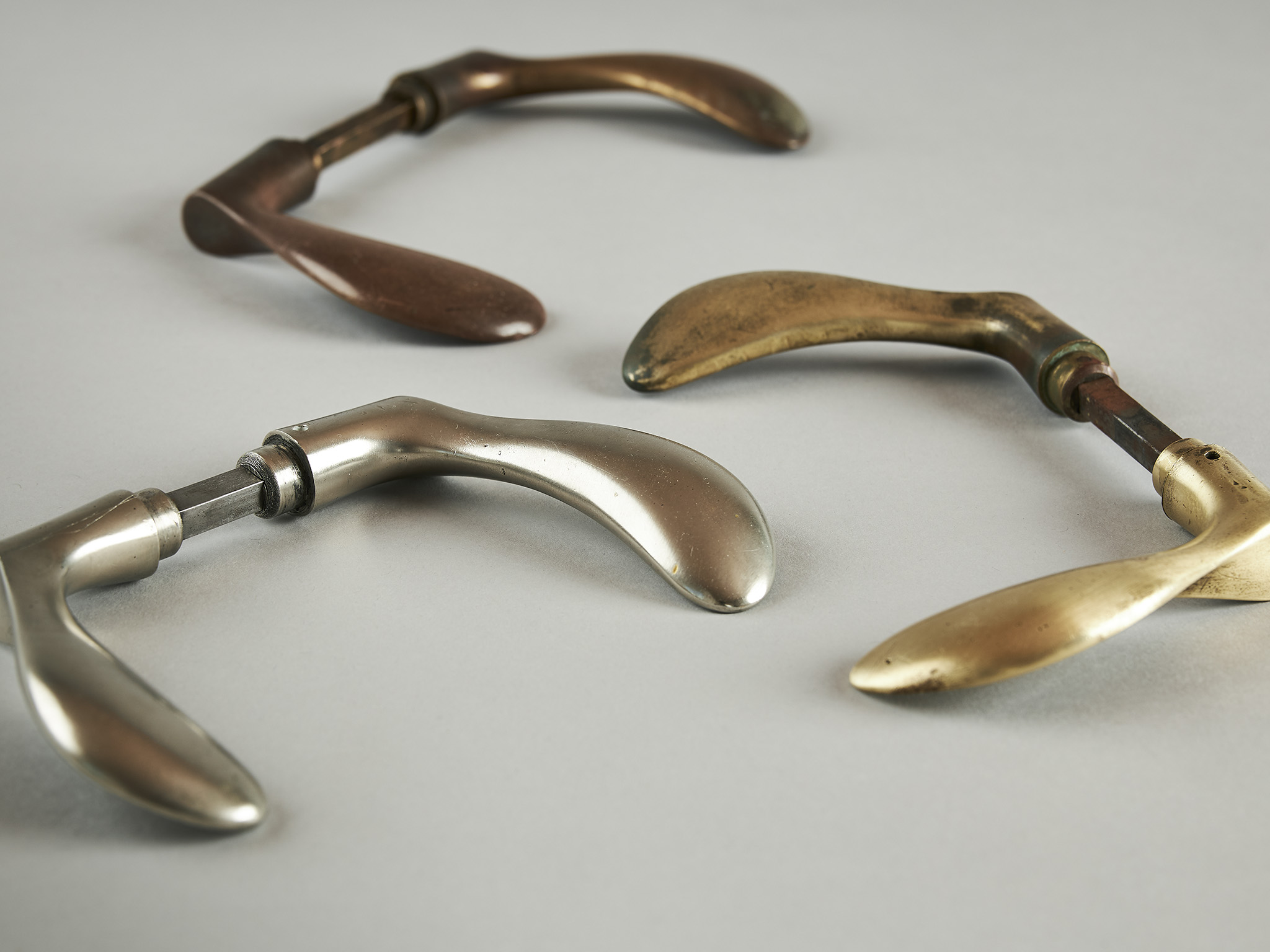Royal Lamp
PART OF THE TOTAL DESIGN FORSAS Royal Hotel
Arne Jacobsen used the simple hemispherical shape of the Royal Lamp from 1957 in the modern and exclusive environment he created at the SAS Royal Hotel.
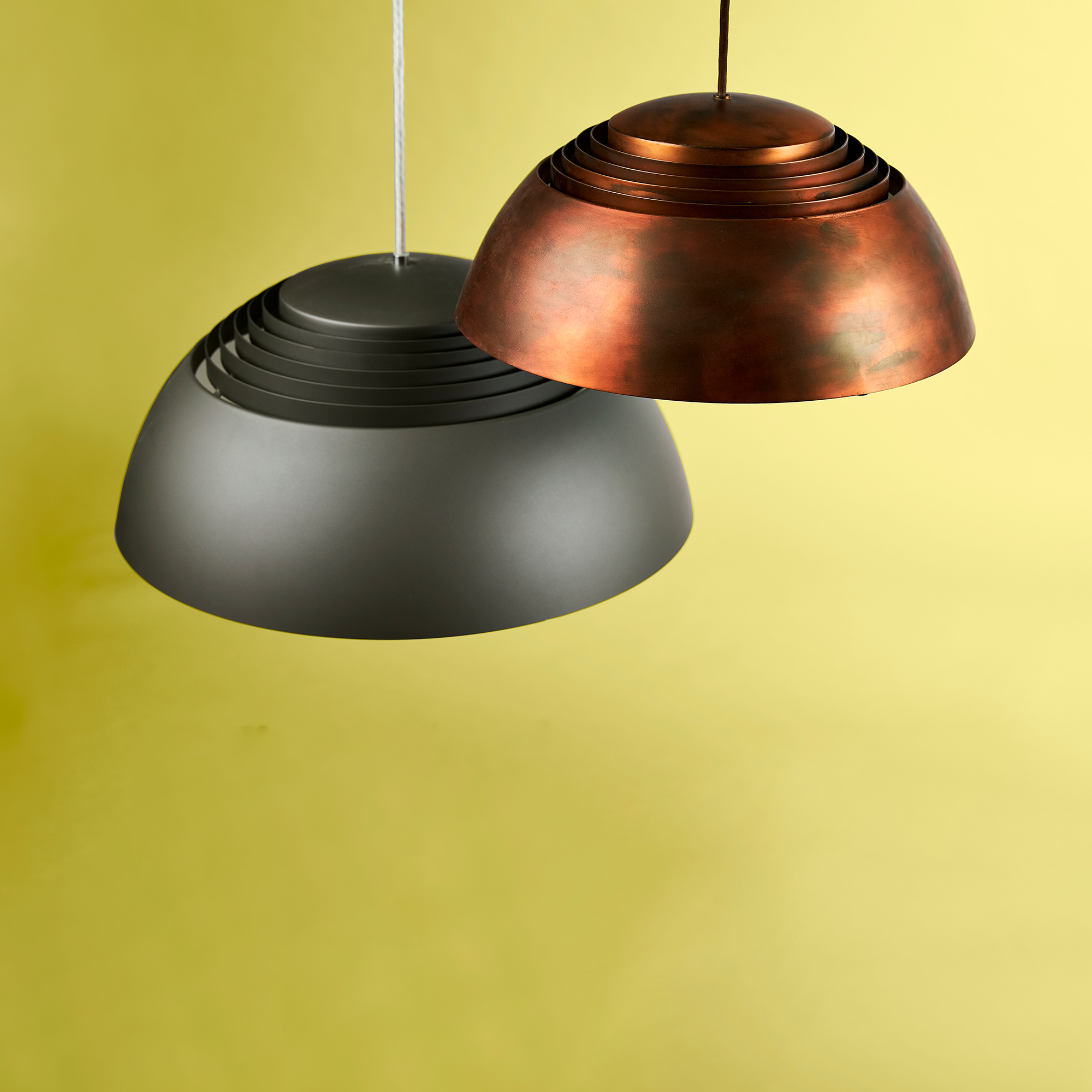
Since it was designed in 1957, the AJ Royal pendant lamp has been installed in private and public settings the world over. The simple hemispherical form with a section of open bands exemplifies Arne Jacobsen’s use of reduction and simplicity as key effects.
The luminaire became famous as part of the design concept Arne Jacobsen created at the SAS Royal Hotel in Copenhagen (now Radisson Collection Royal Hotel). The hotel, which opened in 1960, was designed by Arne Jacobsen throughout, from the building itself to the interior and furnishings. Today, it is regarded as a masterpiece and one of his principal works. Here, the Royal Pendant was used as part of Arne Jacobsen’s comprehensive gesamtkunstwerk with custom-designed furniture, textiles and utilitarian designs that came together in a perfectly coordinated whole. Like many of the other designs for the hotel, the AJ Royal Pendant has since become a prominent part of Danish design history.
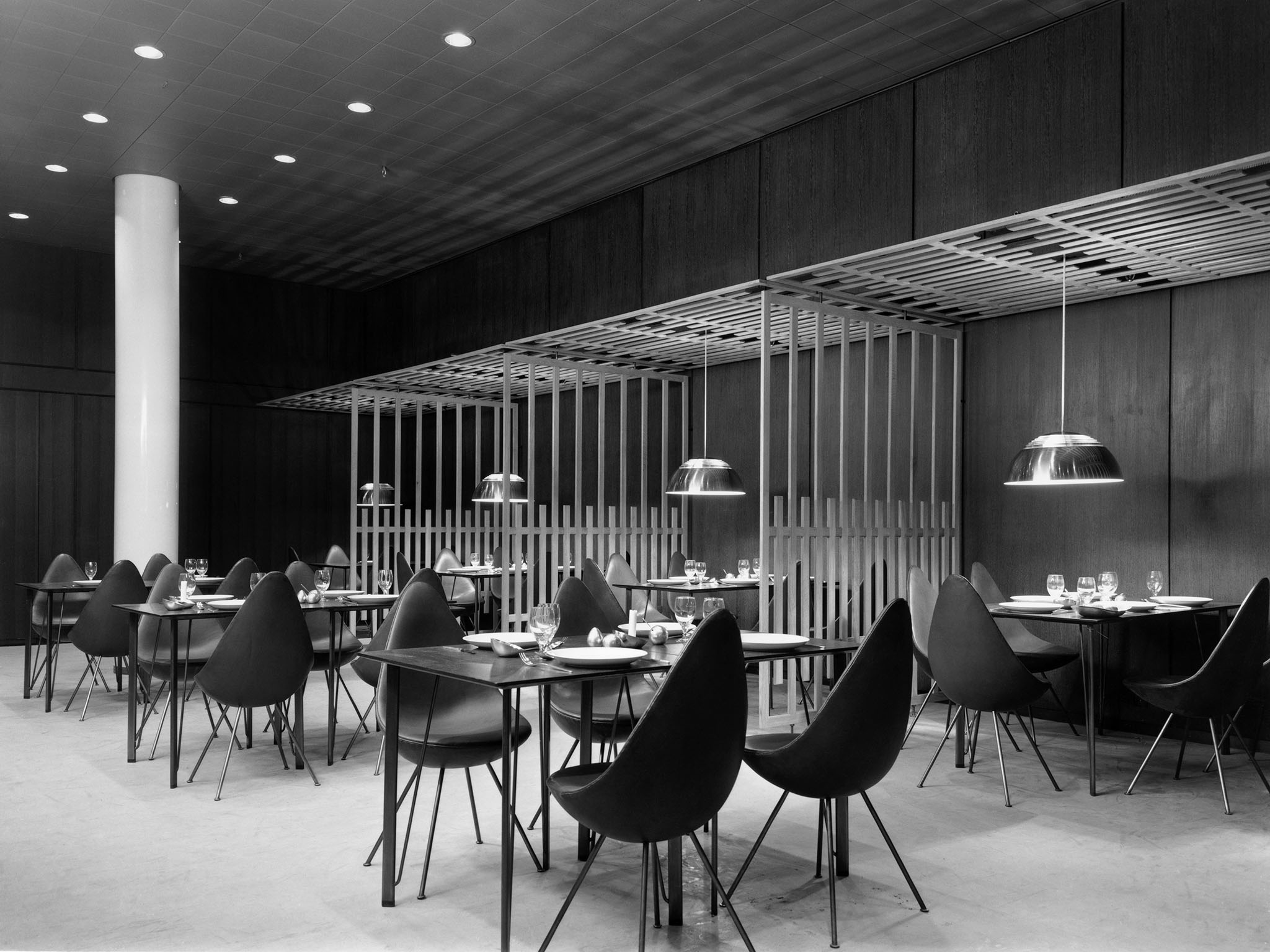
Arne Jacobsen developed the Royal Pendant in 1957 in collaboration with the Danish lamp manufacturer Louis Poulsen. Arne Jacobsen designed the lamp in a big and a small version to meet two different needs. The smaller lamp was designed to hang high and is therefore equipped with a cover at the bottom that diffuses the light and prevents glare, while the large version does not have a similar cover. The large Royal Pendant was launched in 1957, while the smaller version was launched a few years later in 1962.
The pendant lamp is an early example of Arne Jacobsen’s use of basic geometric shapes, a feature that came to characterize his work over the 1960s. The design is based on a simple hemispherical shape, its stringency broken only by a band of slats at the top of the lampshade. The slats let light escape through the top of the lamp in a softer uplight that supplements the direct downwards illumination.
Manufactured by
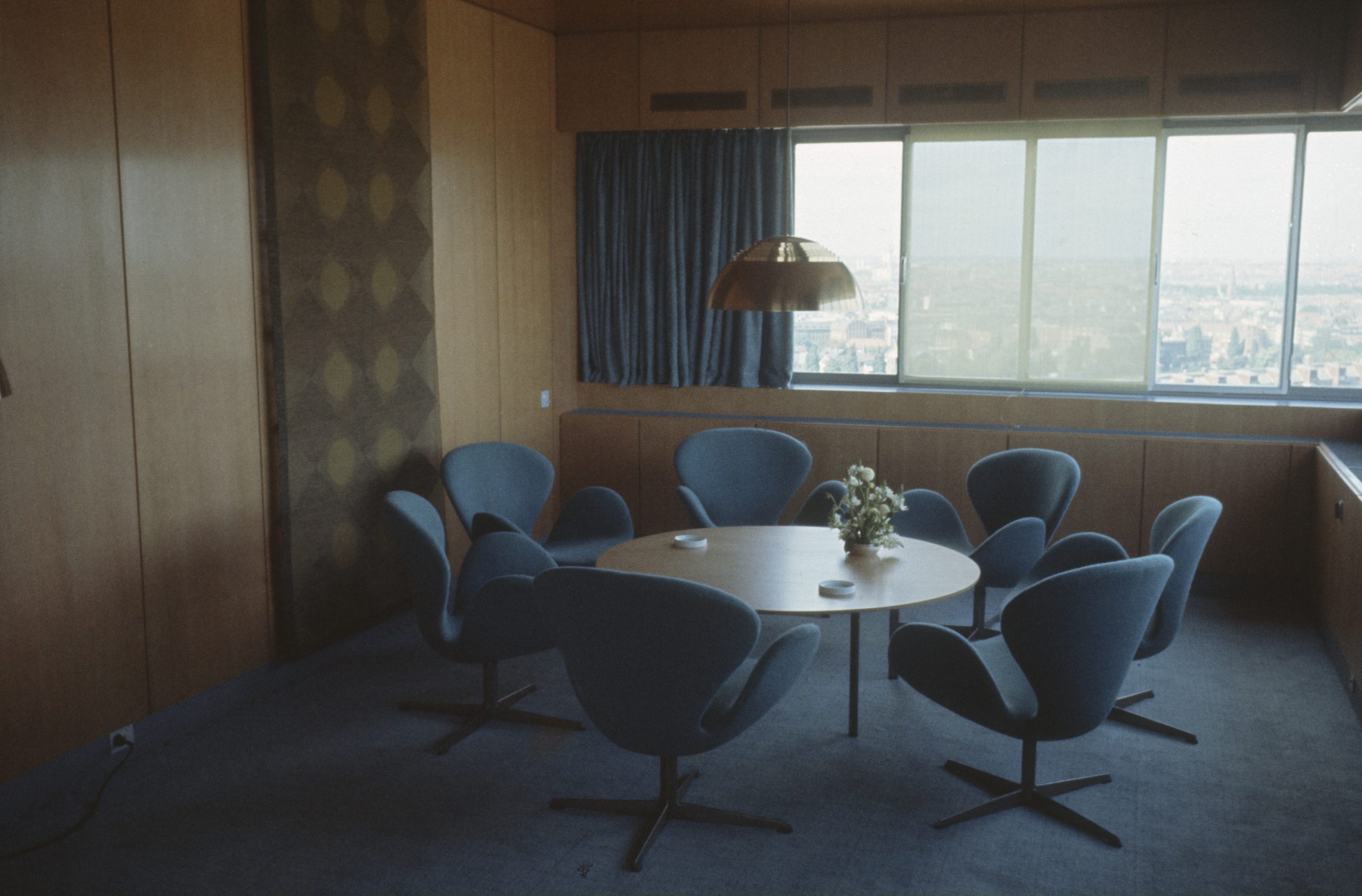
The simple hemispherical form with a section of open bands exemplifies Arne Jacobsen’s use of reduction and simplicity as key effects.
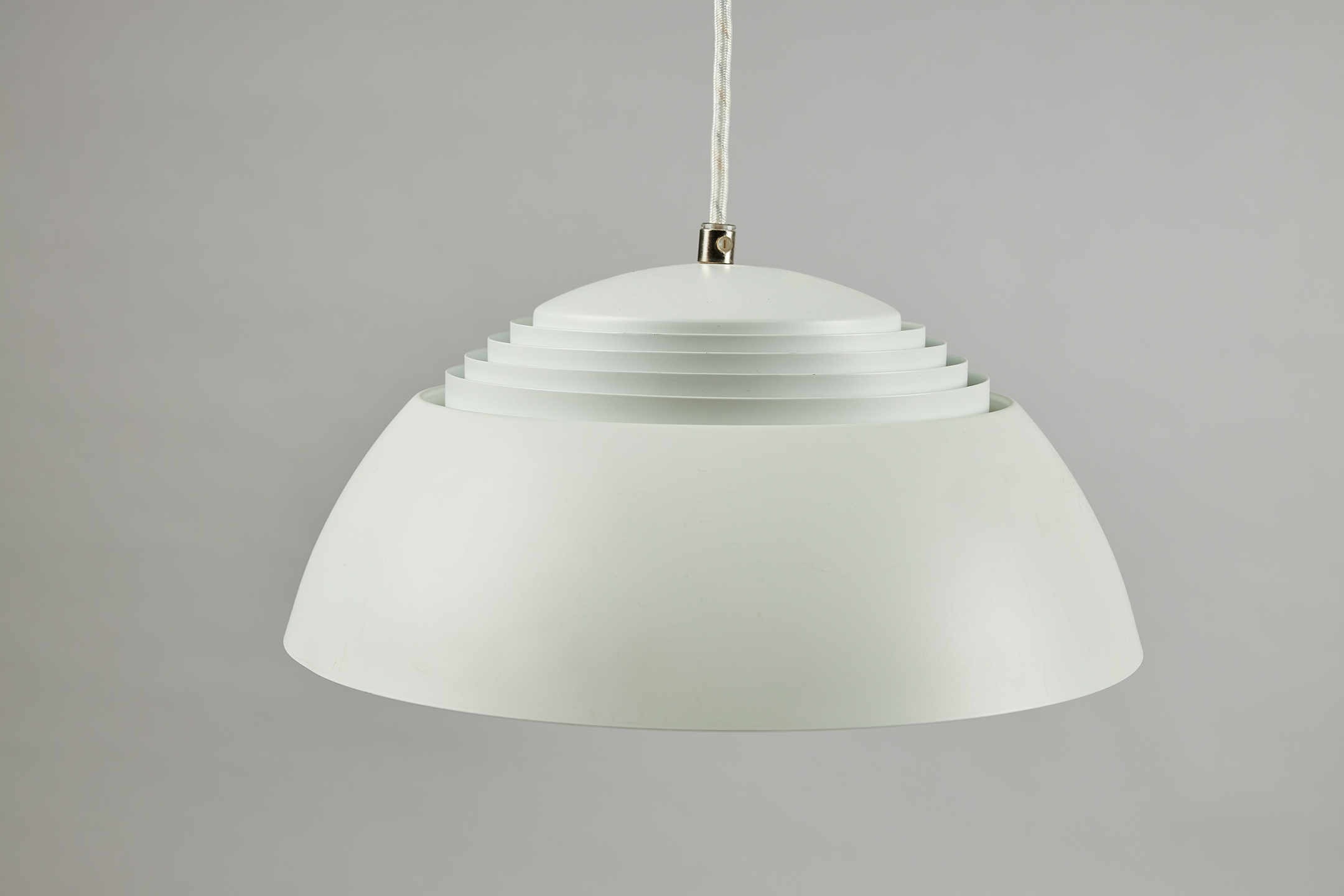
At the SAS Royal Hotel, the Royal Pendant helped define an exclusive hotel environment, where a wealth of materials, patterns, shapes and colours came together in Arne Jacobsen’s meticulously composed gesamtkunstwerk. The Royal Pendant was installed in several locations throughout the hotel, either with the standard shade in lacquered aluminium or with a special brass shade that gave the design a different materiality and a warmer note. The brass model was used, among other places, in the ground-floor snack bar along with wood slat room dividers in light-coloured oak and the custom-designed Drop chair. In the panorama lounge on the hotel’s 22nd floor, the brown pendant lamp complemented Swan and Series 3300 chairs upholstered with dark blue fabric.
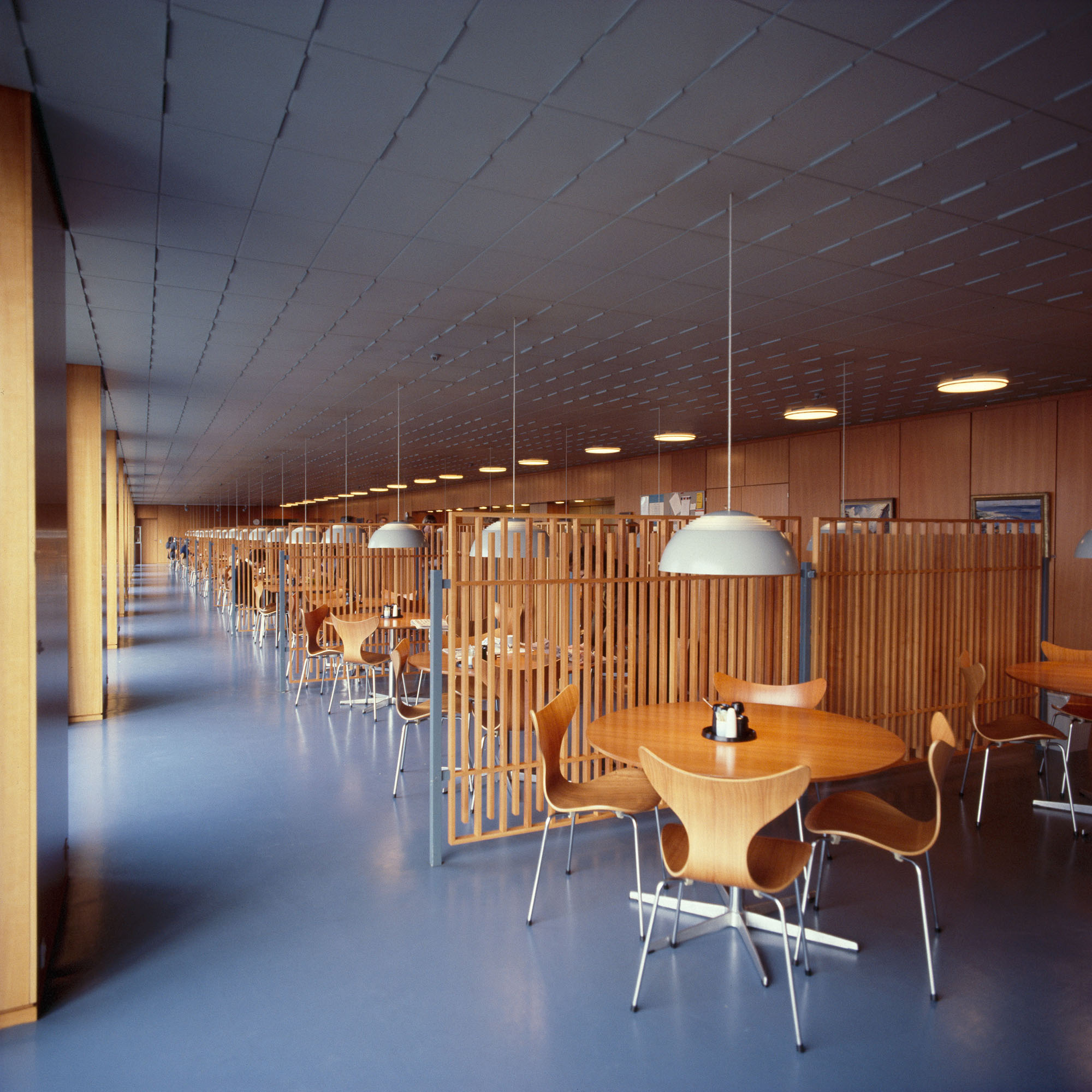
The Royal Pendant was designed for both large public spaces and private homes. Arne Jacobsen used it in several of the detached single-family houses he designed during this time as well as over his dining table in his own home at Strandvejen 413. It was also featured in one of the four terraced houses Arne Jacobsen presented in the international architecture exhibition Interbau in Berlin in autumn 1957, which was furnished during the exhibition period. In the exhibition house, which was to represent a modern Danish home, the lamp was used above the kitchen dining area, which also featured the small, functional Ant chair.
Sources: Arne Jacobsen Design Archives. / Arne Jacobsen’s scrapbooks. The Royal Library – Danish Art Library. / Sheridan, M. (2003). Room 606: The SAS House and the Work of Arne Jacobsen. London: Phaidon Press / Stenum Poulsen, K., Skaarup Larsen, A., & Staunsager, S. (2020). Arne Jacobsen – Designing Denmark. Kolding: Trapholt. / Thau, C., & Vindum, K. (1998). Arne Jacobsen. Copenhagen: Danish Architectural Press. / Tøjner, P. E., & Vindum, K. (1994). Arne Jacobsen: arkitekt & designer. Copenhagen: Dansk Design Center.
